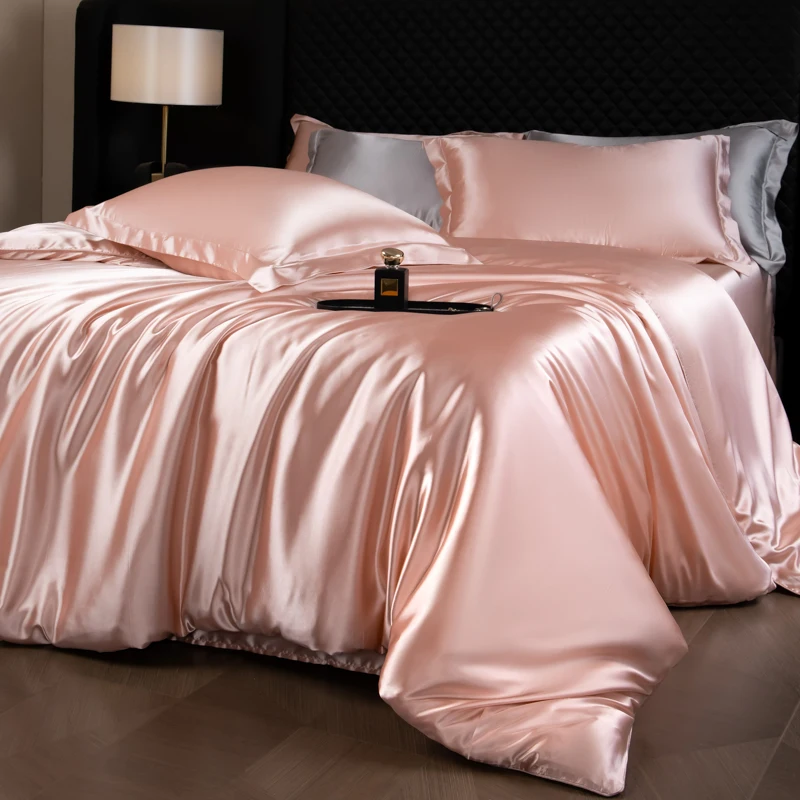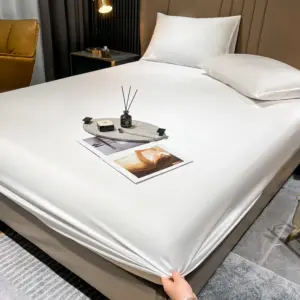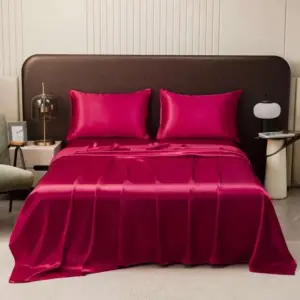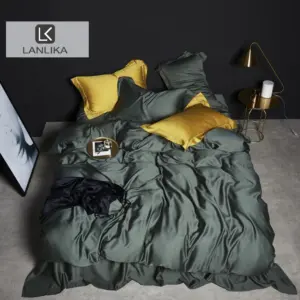The Hidden Warmth of Silk: Why Silk Sheets Excel in Cold Weather
Yes, silk sheets do keep you warm in winter, despite what many people believe about this luxurious fabric. While silk feels cool to the initial touch, its unique natural properties actually make it an excellent insulator during cold weather. This misconception about silk being only for hot weather stems from its lightweight feel, but the science tells a different story.
Silk contains natural protein fibers with a remarkable molecular structure that creates insulation through tiny air pockets. These hollow fibers trap warmth close to your body while simultaneously regulating temperature. This unique combination allows silk to provide warmth without the heaviness of traditional winter bedding materials.
Throughout history, silk has been prized not just for its luxury but for its practical thermal qualities. In cold regions of Asia, silk-filled garments and bedding have been used for centuries to provide lightweight yet effective insulation against harsh winters.
The secret to silk’s exceptional winter performance lies in its thermal properties of mulberry silk and unique structure. Premium options like mulberry silk represent the gold standard, offering superior insulation thanks to longer, more uniform fibers. This article will explore how the structure of silk regulates temperature, compare silk to other winter fabrics, and provide practical advice for choosing the best silk sheets to keep you cozy all winter long.
Understanding Silk’s Natural Temperature Regulation
Silk’s remarkable ability to keep you warm in winter without overheating stems from its unique molecular composition and structure. Unlike synthetic materials that simply create a barrier, silk actively works with your body’s temperature fluctuations throughout the night.
The Science of Silk’s Thermal Properties
At the molecular level, silk consists primarily of two proteins: sericin and fibroin. These proteins create a unique structure with naturally hollow fibers that trap air and create exceptional insulation. This is similar to how down or wool works, but with added benefits of lighter weight and smoother texture.
The temperature regulating properties of mulberry silk sheets come from this natural insulation combined with remarkable adaptability. When you’re cold, the air pockets in silk fibers retain your body heat, creating a warm microclimate. But unlike many synthetic materials, silk doesn’t trap excessive heat, preventing the uncomfortable sweating that can paradoxically make you colder during winter nights.
Adaptive Thermal Regulation
One of silk’s most impressive qualities is its ability to adapt to your body temperature. As your body warms up, silk efficiently dissipates excess heat rather than trapping it. This thermal conductivity strikes a perfect balance – warm enough for cold nights but responsive enough to prevent overheating.
This natural temperature regulation makes mulberry silk sheets particularly effective during winter. The sheets maintain a consistent, comfortable temperature throughout the night, even as the ambient room temperature fluctuates. This consistency is crucial for uninterrupted sleep during colder months when temperature variations can be more extreme.
The Critical Role of Moisture Management in Winter Warmth
When it comes to staying warm in winter, managing moisture is just as important as providing insulation. Many people don’t realize that dampness – whether from night sweats or environmental humidity – significantly reduces bedding’s ability to keep you warm.
Silk excels in moisture management, which directly contributes to its winter warming capabilities:
- Silk absorbs up to 30% of its weight in moisture without feeling damp to the touch
- Moisture is wicked away from your body and evaporates quickly
- The fabric maintains its insulating properties even when absorbing moisture
- Prevents the clammy feeling that makes other winter bedding uncomfortable
This moisture-wicking ability is particularly valuable during winter when indoor heating can create a challenging sleep environment. Central heating often lowers humidity levels, which can lead to dry skin and respiratory discomfort. Simultaneously, your body may still produce moisture through perspiration. Silk’s ability to both absorb moisture and remain dry to the touch creates an ideal microclimate for winter sleeping.
The advantages of sleeping on mulberry silk become especially apparent when comparing moisture management capabilities to other fabrics. While flannel and cotton can initially feel warm, they tend to trap moisture, eventually leading to a cold, damp feeling. In contrast, 100% silk sheets maintain their warming properties throughout the night by efficiently managing moisture.
This combination of insulation and moisture control explains why silk, despite its reputation as a “cool” fabric, actually excels at keeping you warm during winter months.
Momme Weight: The Key to Winter-Ready Silk Sheets
When shopping for silk sheets that will provide optimal warmth in winter, understanding momme weight is essential. Momme (pronounced “moh-mee”) is the standard measurement for silk fabric density and quality – similar to thread count for cotton but more accurate for predicting warmth and durability.
The momme weight indicates how many pounds a piece of silk fabric measuring 45 inches by 100 yards weighs. Higher momme weights mean more silk per square inch, which directly translates to better insulation and warmth retention during winter.
Winter Momme Weight Recommendations
| Momme Weight | Winter Suitability | Insulation Level | Durability |
|---|---|---|---|
| 12-16 momme | Minimal | Light | Low-Medium |
| 19-21 momme | Good | Moderate | Medium |
| 22-25 momme | Excellent | High | High |
| 25+ momme | Superior | Maximum | Very High |
For winter use, 22 momme silk sheets provide an ideal balance between insulation, durability, and value. They offer significant warmth while maintaining silk’s characteristic lightweight feel. For exceptionally cold climates or particularly cold sleepers, 25+ momme provides maximum insulation.
The increased density in higher momme silk creates more of those tiny air pockets that trap warm air, enhancing the natural insulating properties. Additionally, higher momme silk typically lasts longer through repeated washing and use, making it an investment that will keep you warm for many winters to come.
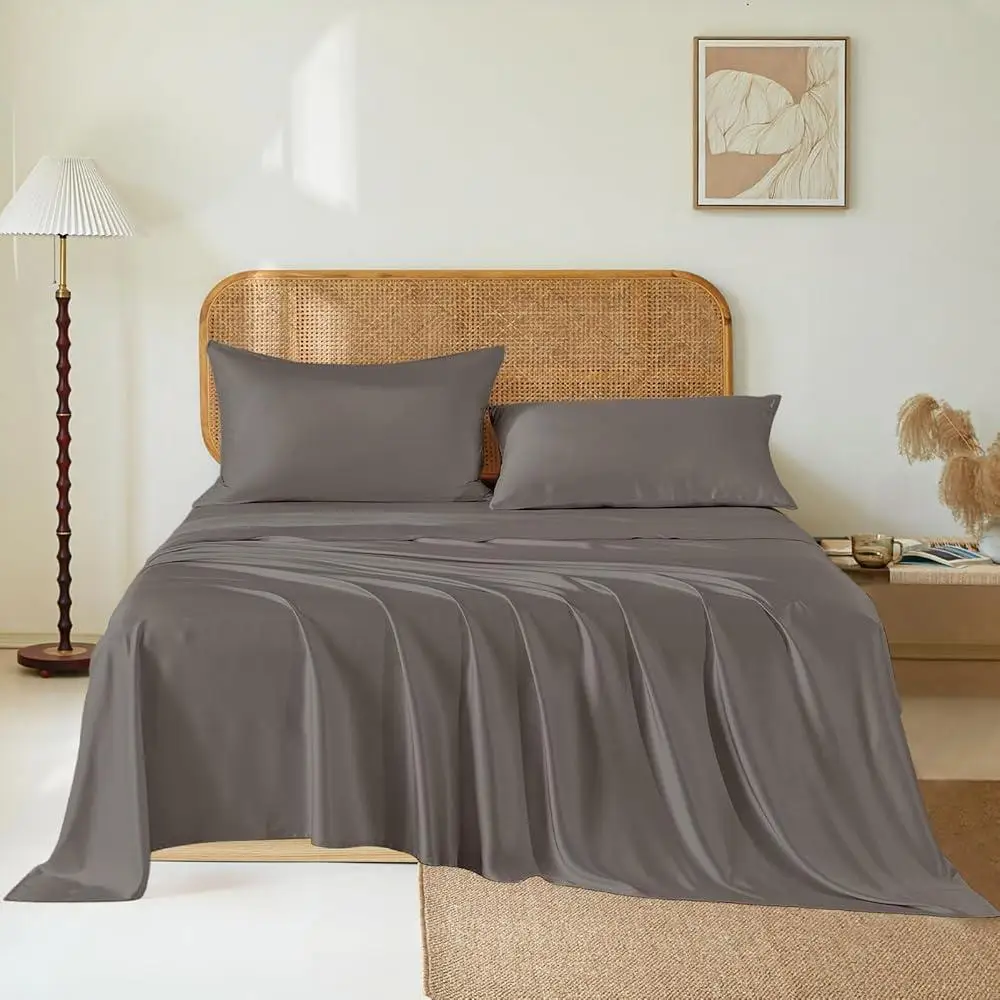
Our luxury silk bedding sets feature optimal momme weights specifically selected for temperature regulation throughout the seasons, including the coldest winter nights.
Quality Matters: Identifying Superior Silk for Maximum Warmth
Not all silk provides the same level of winter warmth. The specific type of silk and its production quality directly impact its thermal properties. To ensure you’re getting silk sheets that will genuinely keep you warm in winter, understanding quality indicators is essential.
100% pure Mulberry silk represents the gold standard for winter warmth. This premium variety comes from silkworms fed exclusively on mulberry leaves, resulting in longer, more uniform fibers that create consistent insulation. When evaluating whether mulberry silk sheets are good for winter use, look for these quality indicators:
- Authentic Certification: Look for certification that confirms genuine Mulberry silk
- Weave Type: Charmeuse weave creates a tighter, warmer surface with the signature silk sheen
- Thread Finish: High-quality silk has consistent thread tension and no snags
- Color Consistency: Even dyeing indicates careful processing that preserves thermal properties
You can identify authentic silk through simple tests. Real silk feels warm within seconds of touching it as it adjusts to your body temperature, while synthetic alternatives remain cool. When rubbed between fingers, genuine silk creates a subtle rustling sound often called “silk whisper.”
The production method also impacts warmth. Hand-reeled silk (rather than machine-processed) typically preserves more of the natural protein structure that contributes to silk’s insulating properties. Our mulberry silk bedding sets feature carefully selected silk that maintains optimal thermal properties through proper processing and finishing techniques.
Strategic Layering: Maximizing Silk’s Winter Performance
While silk sheets provide natural warmth, strategic layering can enhance their winter performance without sacrificing comfort. The key is working with silk’s unique properties rather than overwhelming them with heavy layers that negate silk’s breathability benefits.
For optimal winter warmth without losing silk’s luxurious feel, consider these layering strategies:
- Start with silk fitted sheets directly against the mattress to create a warm foundation
- Add a silk flat sheet as your immediate body contact layer
- Use a silk-filled duvet or comforter as your primary insulation layer
- Consider a lightweight wool or cashmere blanket between the sheet and duvet for extreme cold
- Complete the ensemble with silk pillowcases to maintain facial warmth and comfort
This approach maximizes silk’s natural warmth without compressing the fibers or restricting their ability to regulate temperature and moisture. The ultimate guide to silk sheet duvet layering provides detailed strategies for different temperature ranges and preferences.
Pay special attention to your sleeping environment. Even the best silk sheets work more effectively when paired with appropriate room temperature (ideally 65-68°F/18-20°C for sleeping) and humidity levels (around 40-50%). Creating this optimal sleep environment allows silk’s natural properties to function at their best.
For complete winter comfort, don’t forget your silk pillowcases, which provide the same temperature-regulating benefits for your face and head – areas particularly sensitive to temperature fluctuations during sleep.
Winter Comparison: Silk vs. Traditional Cold-Weather Fabrics
When considering winter bedding options, it’s helpful to understand how silk compares to traditional cold-weather fabrics. Each material has distinct properties that affect warmth, comfort, and overall sleep quality during cold months.
Comparative Analysis of Winter Bedding Materials
| Feature | Silk | Flannel | Cotton | Wool | Microfiber |
|---|---|---|---|---|---|
| Initial Warmth | Moderate | High | Low-Moderate | High | Moderate |
| Sustained Warmth | Excellent | Good | Fair | Excellent | Fair |
| Moisture Management | Superior | Poor | Moderate | Good | Poor |
| Breathability | Excellent | Moderate | Good | Good | Poor |
| Weight | Lightweight | Heavy | Medium | Heavy | Lightweight |
| Allergen Resistance | High | Low | Low | Moderate | Low |
| Durability for Winter Use | High | Moderate | Moderate | High | Low |
Unlike flannel, which feels immediately warm but can become uncomfortably hot and trap moisture, silk provides consistent temperature regulation throughout the night. Flannel’s initial coziness often gives way to overheating and potential night sweats, especially in heated indoor environments.
Cotton sheets, while breathable, lack silk’s insulating properties and can feel cold during winter. Even high-quality cotton options like percale or sateen don’t match silk’s ability to adapt to body temperature fluctuations. Cotton also absorbs moisture but dries slowly, potentially leaving you feeling damp and cold.
Wool offers excellent insulation similar to silk but comes with significantly more weight and potential scratchiness that many sleepers find uncomfortable. Silk provides comparable warmth without the bulk or textural concerns.
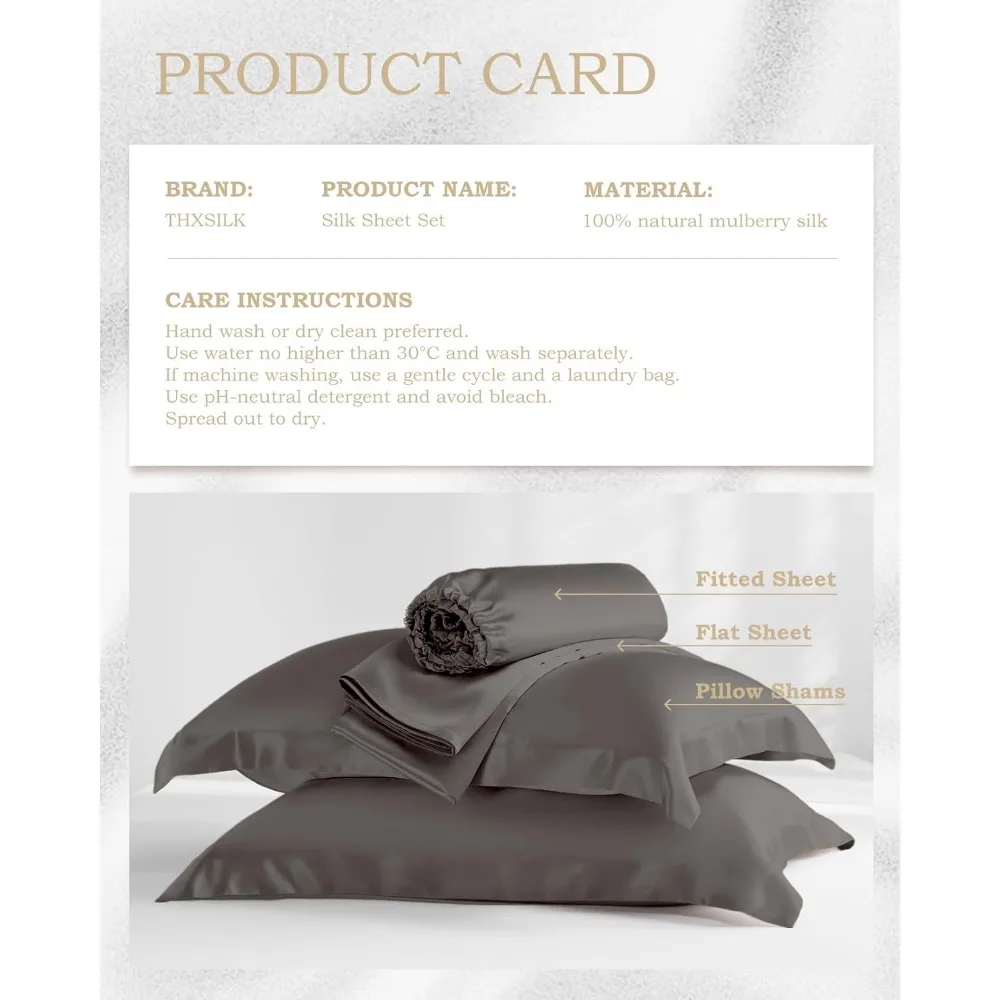
Microfiber and synthetic alternatives may feel warm initially but typically don’t regulate temperature effectively and often cause increased perspiration. These materials rarely match silk’s balance of warmth, breathability, and moisture control, as detailed in our guide to transforming sleep quality.
For those seeking optimal winter comfort without sacrificing luxury, our collection of silk sheets provides superior temperature regulation compared to traditional winter fabrics.
Beyond Warmth: Silk’s Winter Wellness Benefits
While keeping warm is a primary concern during winter months, silk sheets offer additional benefits that enhance overall winter wellness beyond basic temperature control.
Hypoallergenic Properties for Winter Health
Winter often brings increased indoor allergens as homes are sealed against cold weather and heating systems circulate dust. Silk’s natural resistance to dust mites, mold, and mildew creates a healthier sleep environment. Unlike flannel and some cotton varieties that can harbor allergens, silk naturally repels these irritants, helping to reduce winter allergies and respiratory issues.
Skin Hydration During Dry Winter Months
Indoor heating systems typically reduce air humidity, leading to dry skin and irritation. Silk’s benefits for skin become particularly valuable during winter:
- Silk maintains your skin’s natural moisture barrier
- The smooth surface reduces friction that can exacerbate dry skin
- Natural proteins in silk support skin hydration
- Prevents the moisture-stripping effect common with cotton and synthetic fabrics
Reduced Static Electricity
Winter’s dry air often increases static electricity in bedding, which can disrupt sleep and cause hair frizz. Silk naturally produces minimal static compared to synthetic materials and even cotton, creating a more comfortable sleeping environment during dry winter months.
Temperature Consistency for Better Sleep
Silk’s ability to prevent night sweats and maintain consistent temperature improves sleep quality during winter when temperature fluctuations are common. This temperature stability helps maintain uninterrupted sleep cycles, which are often disrupted by needing to adjust bedding or deal with overheating during winter nights.
Our silk fitted sheets provide consistent contact with your body throughout the night, maximizing these wellness benefits while maintaining optimal warmth.
California King Silk Fitted Sheet, King Size Silk Fitted Sheet, Mulberry Silk Fitted Sheet, Queen Size Silk Fitted Sheet
Price range: $120.04 through $390.79 Select options This product has multiple variants. The options may be chosen on the product pageFull-size Silk Sheets, King Size Silk Sheets, Queen Size Silk Sheets, Twin Size Silk Sheets, Washable Silk Sheets
Price range: $95.95 through $178.37 Select options This product has multiple variants. The options may be chosen on the product page100% Silk Sheets, Green Silk Sheets, King Size Silk Bedding Set, Mulberry Silk Bedding Sets, Queen Size Silk Bedding Set
Price range: $1,246.21 through $1,615.22 Select options This product has multiple variants. The options may be chosen on the product pagePink Silk Sheets, Twin Size Silk Sheets
$171.80 Select options This product has multiple variants. The options may be chosen on the product pageFull-size Silk Sheets, Pink Silk Sheets
$136.31 Select options This product has multiple variants. The options may be chosen on the product pageFull Silk Bedding Set, King Size Silk Bedding Set
Price range: $120.99 through $190.49 Select options This product has multiple variants. The options may be chosen on the product page
Common Concerns About Silk in Winter
Despite silk’s excellent winter warming properties, several misconceptions persist about using silk sheets during colder months. Let’s address these common concerns:
“Silk feels cold when I first get into bed”
This initial cooling sensation is temporary. Unlike flannel or fleece that feel warm immediately, silk quickly adapts to your body temperature within moments. This brief adjustment period gives way to consistent warmth throughout the night without the overheating common with other materials. Many Sanctuary Soft customers actually prefer this brief cooling sensation as it makes settling into sleep more comfortable.
“Silk sheets are too delicate for everyday winter use”
Quality silk sheets are surprisingly durable. While they require appropriate care, high momme weight silk (22+ momme) stands up well to nightly winter use. The natural strength of silk fibers, particularly in winter-appropriate silk sheets, means they often outlast cotton alternatives when properly maintained.
“The cost doesn’t justify seasonal bedding”
While silk sheets represent a higher initial investment than some alternatives, their year-round usability makes them economically sensible. Unlike heavy flannel sheets that are impractical in warmer months, silk’s temperature-regulating properties make it suitable for all seasons, providing better long-term value than season-specific bedding.
“Silk requires complicated winter care”
Winter care for silk is straightforward. Hand washing or using a washing machine’s gentle cycle with mild detergent is sufficient. Air drying or using a dryer’s lowest heat setting preserves silk’s insulating properties. These simple care routines maintain silk’s warming capabilities throughout the winter season.
Our king size silk bedding sets come with clear care instructions specifically designed to maintain thermal properties through regular winter use.
Proper Care to Maintain Silk’s Winter Warming Properties
To ensure your silk sheets continue providing optimal warmth throughout winter and beyond, proper care is essential. The right maintenance preserves the natural protein structure that gives silk its unique thermal properties.
Winter Care Guide for Silk Sheets
- Washing: Use cold or lukewarm water (never hot) with a pH-neutral detergent specifically formulated for silk
- Frequency: Wash every 10-14 days during winter to remove body oils while preserving natural proteins
- Drying: Air dry away from direct heat sources or use a dryer on the lowest heat setting
- Ironing: If necessary, use the lowest setting specifically for silk while sheets are still slightly damp
- Storage: Store folded with acid-free tissue paper in a breathable cotton bag
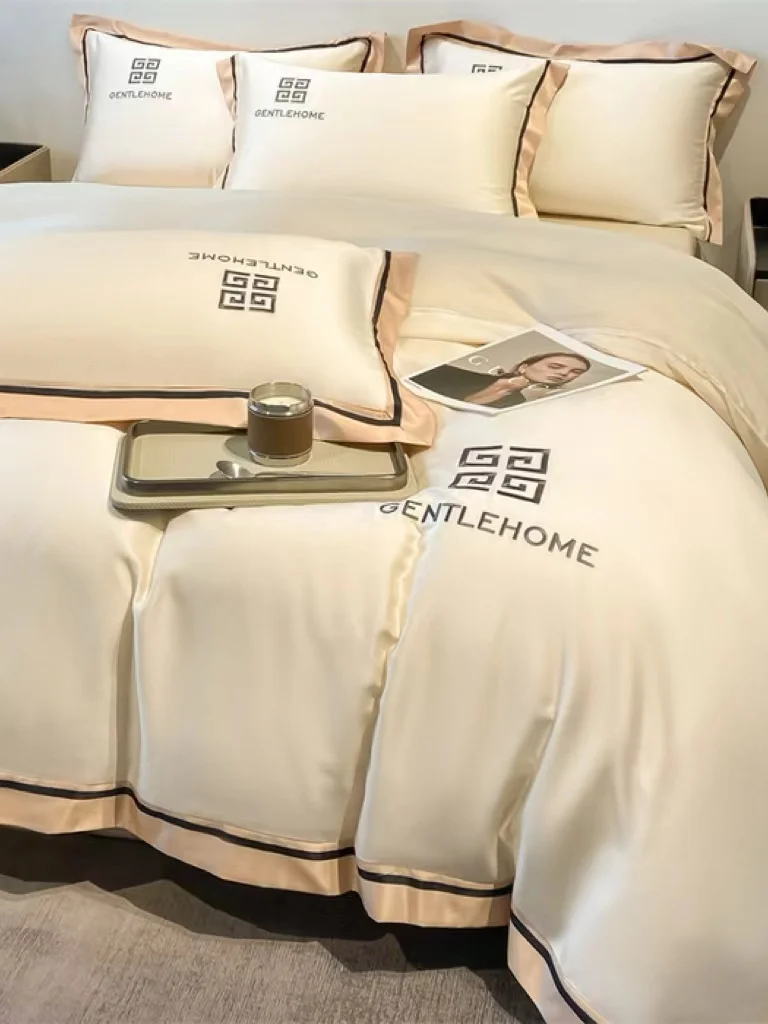
Avoid fabric softeners, bleach, and enzyme-based detergents, as these break down silk’s protein structure and diminish its insulating properties. If you notice your silk sheets losing their warmth-retention capabilities, it may indicate that harsh cleaning products have damaged the fibers.
For silk sheets used specifically during winter, consider rotating between two sets to reduce wear while maintaining consistent cleaning schedules. This approach extends the thermal lifespan of each set while ensuring you always have fresh bedding available.
Our silk sheets for sensitive skin include detailed care instructions to maintain both their hypoallergenic and thermal properties. Similarly, our queen size silk bedding sets are designed for easy maintenance while preserving their winter warming capabilities.
Frequently Asked Questions About Silk Sheets in Winter
Are silk sheets worth the investment for winter use?
Yes, quality silk sheets offer exceptional value for winter use due to their natural temperature regulation, moisture management, and durability. While the initial cost is higher than synthetic alternatives, high-quality silk sheets can last for many years with proper care. Additionally, unlike season-specific bedding, silk works year-round, making it a versatile investment in sleep comfort. Many customers find that silk bedsheets are worth the investment for their combination of luxury and practical thermal benefits.
What momme weight is best for extremely cold climates?
For extremely cold climates, look for silk sheets with a minimum of 25 momme weight. This higher density provides maximum insulation while maintaining silk’s breathability. Some sleepers in particularly cold regions prefer 30 momme, though these are less common and typically more expensive.
Can silk sheets be used year-round or only seasonally?
Silk sheets are ideal for year-round use due to their remarkable temperature-regulating properties. The same qualities that make silk warm in winter make it cooling in summer by wicking away moisture and allowing air circulation. Our washable silk sheets are particularly convenient for year-round use.
How do silk sheets compare to heated blankets for warmth?
Silk sheets provide natural, consistent warmth without the electromagnetic exposure, uneven heating, or dryness associated with electric blankets. While heated blankets provide immediate warmth, silk offers a more balanced, healthy warmth that works with your body’s natural temperature regulation. Many users find combining silk sheets with a brief heating period (turning on an electric blanket to warm the bed, then turning it off before sleep) provides ideal winter comfort.
Are vegan silk alternatives as warm as real silk?
Plant-based silk alternatives have improved significantly but typically don’t match real silk’s thermal properties. These alternatives may provide moderate insulation but generally lack the temperature-regulating proteins found in natural silk. For those seeking vegan options, look for innovations specifically designed to mimic silk’s hollow fiber structure, which is key to its insulating properties.
How quickly do silk sheets adjust to body temperature?
Quality silk sheets begin adjusting to your body temperature almost immediately upon contact and reach optimal thermal regulation within 2-3 minutes. This brief adjustment period is significantly faster than most cotton alternatives, which can take 10+ minutes to feel properly warm in cold conditions.

